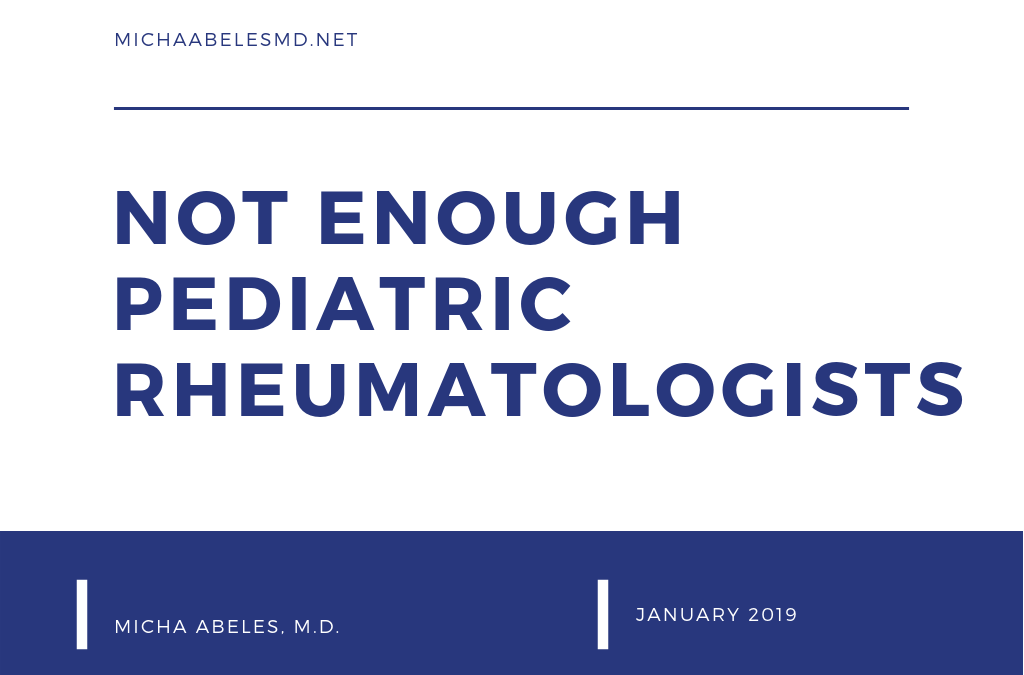A child who does not receive adequate treatment for a rheumatic condition may suffer dire lifelong consequences. Over 300,000 children have been diagnosed with rheumatic diseases, yet fewer than 400 pediatric rheumatologists practice in America. Rheumatologists who treat adults are doing their best to meet this care deficit, but they generally lack the expertise of pediatric specialists. The shortage persists amidst efforts to promote awareness of the need.
The structure of medical education may be a primary cause of the subspecialist shortage. The fellowships for pediatric rheumatology requires additional schooling. Because rheumatology is mainly an outpatient field, pediatrics residents do not normally have opportunities to see this field and develop an interest in it. Those residents who do observe pediatric rheumatology patients typically only see the sickest ones; they rarely study the spectrum of patients and how innovative therapies are reshaping the landscape of care for rheumatological diseases.
The American College of Rheumatology is striving to change this unfortunate scenario. In 2001, it initiated a residency program that pairs residents with mentors. The program has encouraged 73 percent of its students to pursue pediatric rheumatology training. Duke has set up a similar program that is turning more residents on to this subspecialty. Professors note that enabling the residents to survey the scope of inpatient and outpatient care has a significant impact.
These gains have not yet been enough to alleviate the shortage, which is expected to worsen. Meanwhile, more rheumatologists who specialize in adult care are forced to deal with pediatric patients. Pediatric specialists hope to increase awareness and provide counsel to these physicians.
The doctors who have not obtained specialized education to work with children face critical challenges with performing exams and prescribing medications for younger, smaller patients. Also, these adult rheumatologists often do not consider how differently children metabolize medications. The doctors need to consider the particular emotional needs of the sick children as well.
Most of the physicians who do treat children report dealing mainly with older teens. Although many of these adult rheumatologists are confident in diagnosing the most prevalent rheumatologic disease (JIA), many lack confidence in treating it. This trepidation could carry significant ramifications. Doctors must consider the impact of inflammatory conditions on a child’s growth when devising treatments. They need to understand how to take advantage of the limited chances to make progress with these patients during their formative years.
The Arthritis Foundation estimates that about one in four children receives proper care from a pediatric rheumatologist. Eight U.S. states have none of these specialists, and five states have only one. The average age of these doctors is over 50 years, so their retirement is critically imminent.
This stark reality shapes an increasing dilemma of access, but rheumatologists remain hopeful. They point to the host of resources that the ACR and disease foundations provide to educate care providers and families. Pediatric rheumatologists are also standing together and reaching out to promote awareness to future physicians.
